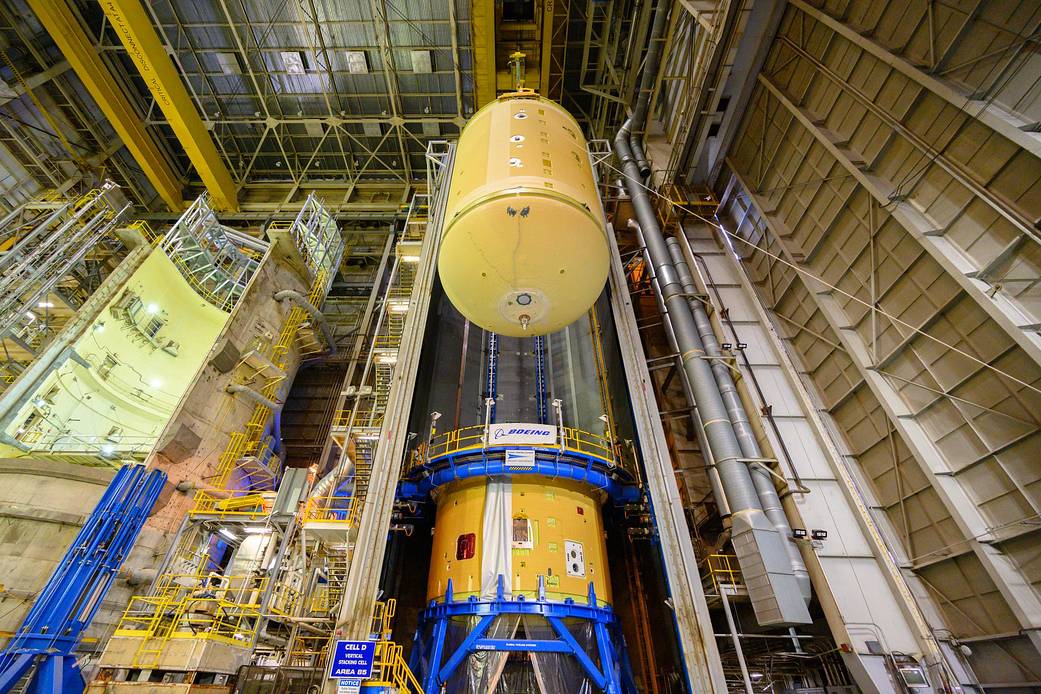Technicians at NASA’s Michoud Assembly Facility in New Orleans stacked two of three hardware elements for NASA’s Space Launch System rocket in an assembly area in the facility on April 28. Crews connected the liquid oxygen tank flight hardware with the intertank. Later, they will add the forward skirt to form the upper portion of the core stage that will help power Artemis II, the first crewed mission of NASA’s Artemis Program and second flight of the SLS rocket. Crews moved the intertank to the assembly and stacking area in March, and then moved the liquid oxygen tank to the same area. The joining of the three structures together is the first major assembly of hardware for the Artemis II core stage. When completed, the upper part of the stage will stand 66 feet tall — just a fraction of the entire core stage. The fully-assembled, 212-foot-tall rocket stage consists of five hardware elements. Together, the core stage and its four RS-25 engines will provide more than 2 million pounds of thrust to help send Artemis II astronauts beyond Earth’s orbit to lunar orbit. The liquid oxygen tank is one of two giant liquid propellant tanks on the core stage. It will hold 196,000 gallons of liquid oxygen cooled to minus 297 degrees Fahrenheit.
With the Artemis program, NASA will land the first woman and the first person of color on the Moon and establish sustainable exploration in preparation for missions to Mars. SLS and NASA’s Orion spacecraft, along with the commercial human landing system and the Gateway in orbit around the Moon, are NASA’s backbone for deep space exploration. SLS is the only rocket that can send Orion, astronauts, and supplies to the Moon in a single mission.
Image Credit: NASA



























